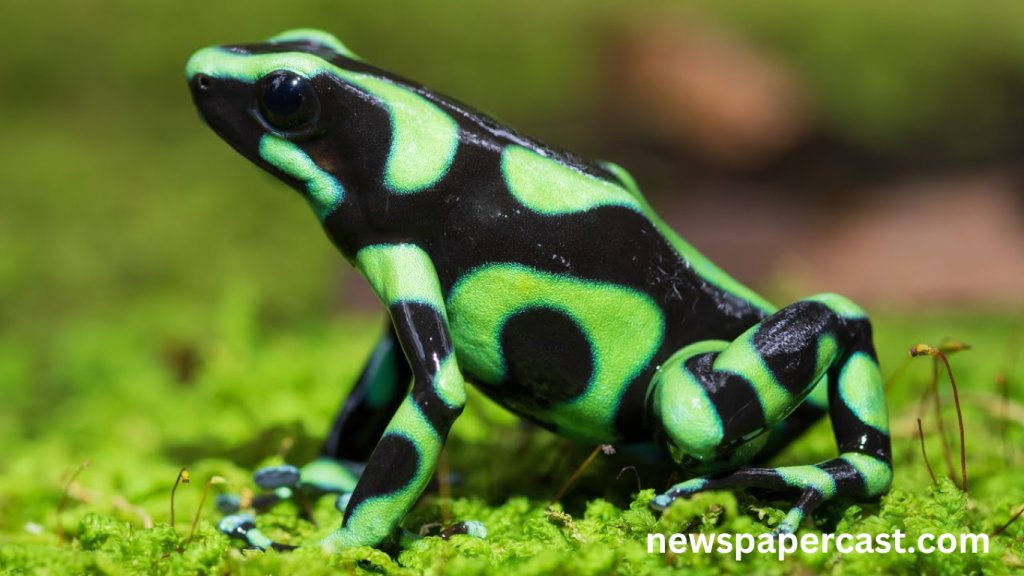Amazon Milk Frog
This striking Frog with a milky blue and white pattern gets its name from the milky secretion it produces when stressed. Native to the Amazon rainforest, its wide eyes and soft skin make it look like a character straight out of a fantasy book.
Desert Rain Frog
With its tiny round body and permanently grumpy face, the Desert Rain Frog from Namibia and South Africa has become a viral internet sensation. Its squeaky toy-like call only adds to its irresistible charm.
Red-Eyed Tree Frog
Famous for its vibrant red eyes and lime green body, this Frog uses its colors to startle predators. Found in Central America’s rainforests, its sticky toes and playful appearance make it a fan favorite in the amphibian world.
Glass Frog
Almost completely translucent, the Glass Frog allows you to see its internal organs through its lime-green skin. Found mainly in Central and South America, it’s a marvel of nature’s creativity with an appearance both bizarre and beautiful.
Vietnamese Mossy Frog
Covered in green and black skin that mimics moss, this Frog is a master of camouflage. Native to northern Vietnam, it blends so well into its surroundings that it looks more like a clump of moss than a living creature.
Blue Poison Dart Frog
Electric blue skin with black spots gives this tiny creature a powerful presence. Native to Suriname, its colors serve as a warning of the toxins it carries, yet its small size and bold look continue to attract fascination.
Read More : Ballistic Penises and Corkscrew Vaginas: The Battles of Ducks
Bud gett’s Frog
Also known as the “Freddy Krueger Frog” because of its wide mouth and weird croak, this South American native is so odd-looking that it becomes endearing. Its flattened face and big eyes give it a perpetual expression of surprise.
Wallace’s Flying Frog
With webbed feet that act like parachutes, this Frog can glide from tree to tree in Southeast Asian rainforests. Its bright green body and yellow sides make it not only functional but fabulous in flight.
Clown Tree Frog
Wearing a bright mix of orange, yellow, and black, the Clown Tree Frog looks like it’s dressed for a jungle party. Found in the Amazon Basin, its playful patterns and small size make it one of the most photogenic amphibians on the planet.
Malagasy Rainbow Frog
Straight from the island of Madagascar, this Frog boasts fiery colors and a stocky build. Its vibrant red limbs and golden back are nature’s way of showing off, and its rarity adds to its exotic allure.
Frequently Asked Questions
What makes frogs adorable to people?
Their big eyes, colorful patterns, small size, and expressive faces often trigger a natural sense of affection in humans
Are any of these frogs poisonous?
Yes, species like the Blue Poison Dart Frog carry toxins in their skin used as defense against predators
Can frogs really fly or glide?
Certain frogs like Wallace’s Flying Frog can glide using their webbed feet, but they don’t truly fly
Are all these frogs found in rainforests?
Most are, though some like the Desert Rain Frog live in arid regions with unique adaptations to survive
Do these frogs make good pets?
Some species can be kept in captivity with proper care, but wild frogs should never be taken from nature
Are any of these frogs endangered?
Yes, habitat destruction and climate change have put several species, including the Malagasy Rainbow Frog, at risk
How do frogs help the environment?
Frogs control insect populations and serve as bioindicators, meaning their health reflects the environment’s overall condition
Why are some frogs see-through like the Glass Frog?
Their transparency helps with camouflage, blending into leaves and avoiding predators while also being fascinating to observe
Conclusion
Frogs are more than just fascinating they’re nature’s tiny masterpieces, each with its own story and style. From vivid colors to glass-like skin and even the ability to glide, these creatures prove that the wild world is full of surprises. Whether found in rainforests or deserts, their charm is universal. Protecting them ensures we preserve not just beauty, but vital biodiversity across the planet.

